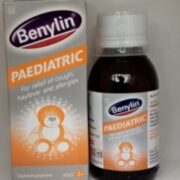Baby & Toddler Milestones: Red Flags To Watch Out For

By Jessica Snyder Sachs
While young children can reach milestones at different ages, the CDC says you should talk to your doctor and consider an early-intervention evaluation if your child displays any of these signs or has a dramatic loss of skills.
Birth to 4 months
Has trouble moving eyes or crosses them most of the time, doesn’t respond to loud noises, doesn’t notice own hands (by 2 months), doesn’t follow moving objects with eyes (by 3 months), doesn’t grasp objects (by 3 months), doesn’t smile at people (by 3 months), can’t support head (by 3 months), doesn’t babble or try to imitate sounds (by 4 months), doesn’t bring objects to mouth (by 4 months), doesn’t push down with legs when feet are on firm surface (by 4 months).
At 7 Months
Seems very stiff, with tight muscles, seems very floppy, like a rag doll, head still flops back when body is pulled to a sitting position, reaches with only one hand, refuses to cuddle, shows no affection for the person who cares for him, persistent tearing, eye drainage, or sensitivity to light, difficulty getting objects to mouth, doesn’t roll over in either direction (by 5 months), can’t sit with help (by 6 months), doesn’t laugh or make squealing sounds (by 6 months).
At 1 Year
Doesn’t crawl or drags one side of body while crawling, can’t stand when supported, doesn’t search for objects that he sees being hidden, says no single words, doesn’t use gestures such as shaking head “no”, doesn’t point to objects or pictures, can’t walk (by 18 months), doesn’t walk heel-toe within a few months of walking.
At 2 Years
Doesn’t speak at least 15 words, doesn’t use two-word sentences, doesn’t imitate actions or words, doesn’t follow simple instructions, can’t push a wheeled toy.
At 3 Years
Frequently falls or has difficulty with stairs, drools persistently or speaks unclearly, can’t build a tower of more than four blocks, has trouble manipulating small objects, can’t copy a circle, can’t communicate in short phrases, doesn’t engage in pretend play, doesn’t understand simple instructions, shows no interest in other children, makes poor eye contact, has little interest in toys.
Source: parents.com



Nice info MISM. Thank you
good one. thanks.
Great tips!
Tnx well noted
Thanx
Great.
Thanks for d tips
Thanks MIM
Lovely tips, tnx
Great tip
Thank God for informantion now that helps one in raising ones kids
a big tnx mism
Thanx
Noted. Thanks MIM
Noted. Thank you
Nice tip
Noted
Nice tips
Thanks MISM
Very important, thanks MIM.
Thanks for this.
tnks
Nice tips
Good one. Really red signs to look at for
Cool tips very important